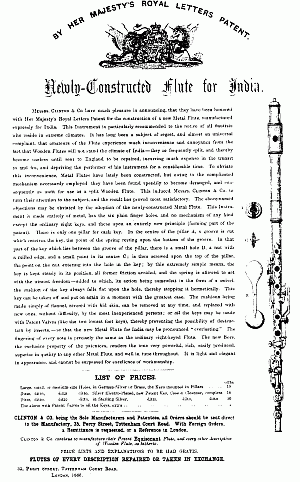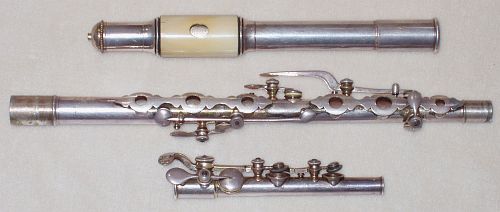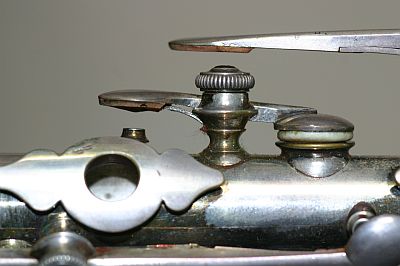

John Clinton (1810–1864) was an English flutist and flute manufacturer. He was one of the first advocates of the conical Boehm flute In England, in the 1840's, but became disenchanted with it. When the right to manufacture Boehms's 1847 version was given to Rudall & Rose, Clinton introduced a number of his own models, most of which he termed "Equisonant".
Some wonderful pages of information on Clinton and his flutes are: The life and work of John Clinton by Adrian C. Duncan and Terry McGee.
One of his marketing efforts was the "Flute for India". An 1860 advertisement is shown below. (Click on the image for a larger version, one that can be read. Also see Terry McGee's pages.)

Unlike the equisonant flute, the flute for India was an ordinary simple system instrument: an eight-key, large-holed English flute. But it was made in metal to avoid damage by extreme climates.

It sounds more-or-less like any large-holed wooden English flute of the time. After hearing it, a modern flutist friend once said that it was the strongest evidence that the material of a flute does not much affect the tone that I could present.

The conical bore is especially visable due to the thin metal walls. The tone holes must be built up, in part so that the key pads will seat well, but also because the height of the "chimney" is critical to the tone, and the whole accoustic design, of a flute. The area surrounding the G# key is shown below.

The area surrounding the embouchure hole was built up as well, in this case with an ivory "barrel embouchure".

